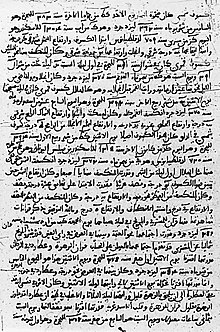Ibn Yunus | |
|---|---|
| Born | Abu al-Hasan 'Ali Abi al-Said ibn 'Abd al-Rahman ibn Ahmad ibn Yunus bin Abd al-'Ala al-Sadafi al-Misri
(أبو الحسن علي أبي السعيد بن عبد الرحمن بن أحمد بن يونس بن عبد الأعلى الصدفي المصري) 950 |
| Died | 6 June 1009 |
| Occupation(s) | Astronomer, astrologer, mathematician, philosopher |
| Era | Ikhshidid era Abbasid era Fatimid era |
| Notable work |
|
Abu al-Hasan 'Ali ibn Abi al-Said 'Abd al-Rahman ibn Ahmad ibn Yunus ibn Abd al-'Ala al-Sadafi al-Misri (Egyptian Arabic: ابن يونس; c. 950 – 1009) was an important Arab Egyptian astronomer and mathematician,[1][2][3] whose works are noted for being ahead of their time, having been based on meticulous calculations and attention to detail. He is one of the famous Muslim astronomers who appeared after Al-Battani and Abu al-Wafa' al-Buzjani, and he was perhaps the greatest astronomer of his time. Because of his brilliance, the Fatimids gave him generous gifts and established an observatory for him on Mount Mokattam near Fustat. Al-Aziz Billah ordered him to make astronomical tables, which he completed during the reign of Al-Hakim bi-Amr Allah, son of Al-Aziz, and called it al-Zij al-Kabir al-Hakimi.[4][5] The crater Ibn Yunus on the Moon is named after him.

- ^ David King (12 March 2008). Seling, Helaine (ed.). Encyclopaedia of the History of Science, Technology, and Medicine in Non-Western Cultures. Springer Science & Business Media. p. 1124. ISBN 978-1-4020-4559-2. Retrieved 16 November 2021.
- ^ Science & Technology in the Islamic World - Page 77
- ^ Science in Medieval Islam: an illustrated introduction by Howard R. Turner - Page 65
- ^ "Starry Messenger: Ibn Yunus and Astronomical Tables". www.sites.hps.cam.ac.uk. Retrieved 18 February 2024.
- ^ "al-Zīj al-kabīr al-Ḥākimī | ISMI". ismi.mpiwg-berlin.mpg.de. Retrieved 18 February 2024.